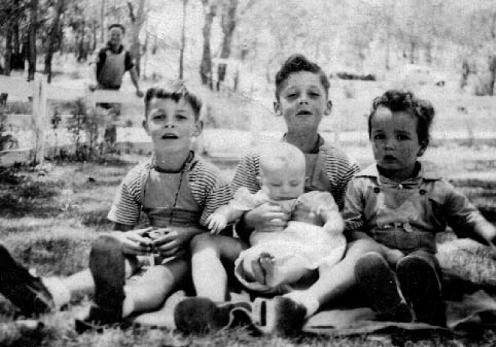
This book was first conceived about a year before Peter Brock’s untimely death in September 2006. The resulting publicity, state funeral, issues with his will and controversy raised by the women in his life meant the project was put on the backburner: to clear the air, so to speak. Now, some four years after that crash during the Targa West tarmac rally in Western Australia, it is time to look at the period in Peter Brock’s life that fashioned his character, created the legend and made him a household name in Australia.
Peter’s youth has never been fully and accurately chronicled, while his early racing days are the stuff of legend. It is also fair to say Peter Brock was a somewhat enigmatic figure who received a degree of notoriety, especially in the immediate period following his death. He was a man who achieved ‘hero’ status long, long before that fateful day near Perth.
Both Terry Russell and I knew Peter in the years before he went motor racing and we kept up our association in varying degrees over the next forty years. This book has not been written to be a warts-and-all exposé, although it may mention the odd pimple or two. Neither is it a document for the racing fraternity – a book highlighting detailed race tactics, times and results, although these are listed at the back. Rather, it is a book about a time in which Peter Brock was not yet an Australian sporting icon: his youth, teenage years and early twenties, and his attempts to go motor racing with the creation of the legendary Austin A30. It also deals with his early successes leading up to when he won his first Bathurst, ‘The Great Race’ in 1972. From then on he was larger than life and had achieved ‘cult’ status.
Like many successful people, particularly those driven to excel, Peter Brock had his detractors, especially those who knew him during his late teens and early twenties. It is fair to say, however, that his ambition and single-minded purpose to be successful in his chosen field were a product of his temperament and this did have a downside, especially in the earlier years when he was a man with an unfulfilled dream.
There are people who were close to him during his early racing days who were not always enamoured with either his temperament or his conduct, but all agree he was a man who matured and changed for the better. He was also a very kind man who did a great deal of charity work, and his tireless efforts during the ‘05’ campaign were exemplary. He was a favourite with the fans because he always had time for them and he loved children, spending an inordinate amount of time talking to them and signing autographs. In this he was the antithesis of his great rival, Alan Moffat.
Terry and I visited and spoke at length to nearly thirty people who knew Peter throughout this period of his life and we are very grateful for the time they took to speak with us to detail their anecdotes about, arguably, the most-famous racing driver Australia has ever produced. Jack Brabham may have been a triple world Formula One champion, but even the non-racing fraternity knew of ‘Peter Perfect’ and the 05 number.
In all cases, the notes of our conversations with the contributors to this book were checked with them to make sure that they were accurate and that I had made the correct assumptions while writing the book. With the help of family and friends I have also endeavoured to clear up the misconceptions and inaccuracies that have appeared in print over the past forty years.
All but a few of the photographs in this missive have never been seen before, let alone published. The ones of his youth and family life were mostly provided by Peter’s elder brother, Neil Brock, as well as other family members and friends, for which we are very grateful. The others were taken over a period of eight years by Terry Russell. They are a graphic pictorial of the young Peter Brock, his friends, his environment and the first racing cars that made him famous.
Colin Fulton
August 2010

‘The Boys’ – Peter, Neil and Lewis (left to right) with baby Phillip, 1950. (Neil Brock)